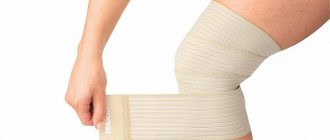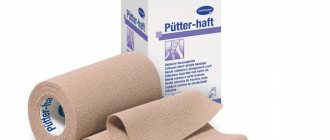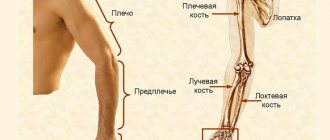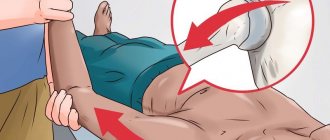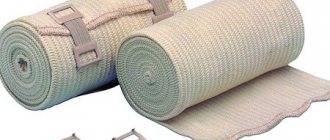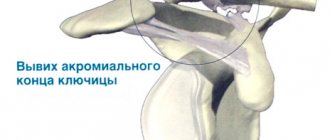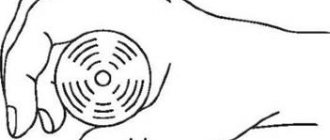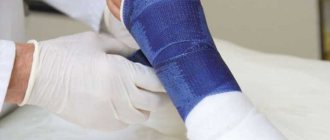Why do you need bandages for boxing?
The first and, perhaps, most important thing for which boxing bandages are needed is to protect the athlete’s bones and knuckles. This will protect against fractures and cracks. Accordingly, a bandaged fist also fixes the joints so that the boxer does not knock out or dislocate anything. It becomes much tougher and stronger, you can hit much harder without fear of damaging your hand. Secondly, after working for a long time in gloves, your hands begin to sweat, and it is the bandages that absorb sweat. This prevents the gloves from developing unpleasant odors and fungi.
Why do you need to bandage your hands?
Then, the purpose of wraps is to protect a boxer's most important weapon, his hands! Hands are made of many small joints and small bones that can easily break from repeated impacts. Bandages are used to hold the arm together, providing support to the wrist, fingers, knuckles and the entire hand.
Many people mistakenly believe that bandages are needed to provide additional cushioning or protection to the knuckles.
The purpose of bandages is NOT to soften the blow; That's why you have boxing gloves.
Bandages are needed to ensure the safety of all your relaxed joints and moving bones. Bandages hold all your joints together, so the impact is better distributed throughout your entire hand. Your joints should not move freely and independently when your hand strikes an object. You can get a fracture if the joints move in their own directions.
A properly bandaged hand will form a tight fist when you clench your hand.
If your hands are relaxed when you strike, it is very easy for the small joints in your hand to run into each other and break. Even if you don't break your hand, you shouldn't risk a hand injury that will prevent you from doing other things in your life, such as typing on a computer, holding a pen, or carrying things. Save your arms for life after boxing!
How to choose bandaging material
There are several types of bandages:
- these are cotton ones that don’t stretch;
- elastic, respectively, which stretch;
- glove bandage or quick bandage.
Cotton bandages are durable and absorb moisture well. These are recommended for beginners who are just learning how to tap. Unlike elastic ones, they will not overtighten or crush anything, unless, of course, you bandage your hands moderately. The disadvantage of this type is that when you compress your fist, the bandage tightens, and when you unclench it, it loosens. Elastic bandages can be divided into two categories: polyester and cotton with elastane added. The first ones do not stretch very much, they are soft and very pleasant to the touch. Such bandages do not slip over the knuckles, so they can provide excellent fixation. The latter stretch much more than the polyester type. But their disadvantage is their rigidity and density. They are recommended for experienced athletes trained in the art of taping. There are also bandage gloves. They are made from neoprene with the addition of gel. This technology will better protect your knuckles, unlike bandages. There are quick bandages without a clear fixation of the wrist, and there are also ones with an additional two meters of bandages. The second model is an ideal combination: the hand is protected and fixed, its only drawback is its price.
Types of dressings by purpose
Pressing
Applying a pressure bandage to the arm is used to stop bleeding in open wounds and injuries using a sterile dressing material or cotton fabric carefully ironed with a hot iron.
Immobilizing or fixing
Used to immobilize a limb in case of fractures or dislocations. In this case, a solid dressing material is used - plaster, splints.
Protective
To prevent microorganisms from entering the wound, the development of secondary infection and to protect against the influence of harmful environmental factors, such as friction with clothing.
Corrective
They are used to correct existing joint deformities.
Medicinal
Ensure the supply of necessary medicinal substances to the wound or sore spot.
Depending on the type of use, bandages are divided into soft, hard and elastic. Proper application of a bandage on the arm helps to significantly reduce pain, reduce the number of unnecessary movements and, thereby, prevent the occurrence of muscle spasm and tissue swelling. This is especially important in the case of a broken arm.
In addition to using bandages for injury, they can be used for arthrosis, arthritis, myositis, tendovaginitis - when it is also necessary to provide rest to the sore limb. Elastic bandages are used not only for treatment, but also to prevent injuries. Especially when playing sports.
Winding technique
How to choose the length
The most common bandage length is 2.5 meters. For those with a large fist, 2.75-3 meters is suitable. If you need to fix individual fingers, then a 4-meter bandage will do. But, of course, it is more reliable to test the bandage in place, using different taping techniques and levels of fixation.
How to wind correctly
There are many ways to wrap boxing wraps. It all depends on its length and on what part the athlete wants to focus on. Conventionally, taping can be divided into four parts:
- Wrist fixation.
- Fixation of the thumb joint.
- Fixing the knuckles.
- Winding the striking surface.
To begin, wrap a bandage around your wrist; usually 3 or 4 skeins are enough. The bandages should not be wound too tightly, otherwise the blood circulation of the limb will be impaired. The second stage is fixation of the thumb joint. A loop is made around the thumb 1 or 2 times.
And then wrap the wrist and hand evenly, making the wrapping as long as the length of the bandage is enough. When the bandage is completely wound, secure the end with Velcro. This is the easiest and fastest way to wrap boxing bandages; it is used by both beginners and experienced fighters. The other method takes a little more time because the winding is “run” through your fingers. This method is also popular, but beginners need some time to practice this type of winding of boxing bandages. Winding is similar to the main version, but a winding is added between the fingers.
Make the initial stage of winding - a loop on the thumb, several windings on the hand, wrist, thumb and then winding the fingers, i.e. separate fixation of the knuckles of the hand.
There are 4 ways to do it:
First way . A loop is made around each finger separately. As in the picture above.
Many people here make the mistake of starting with the little finger instead of the index finger. Next, scroll onto the hand, then the middle finger into the loop, and so on.
Second way. A rotation is performed in the gap between the ring finger and the little finger, a scroll on the hand, then a bandage is wound in the gap between the middle and ring fingers, a scroll on the hand, then a loop on the index finger.
Third way. It is a little similar to the second one, but only in a different sequence, that is, from the index finger.
Fourth way. It resembles the first one, but after looping around each finger, instead of rolling around the hand, it is wound around the thumb. This technique firmly fixes the thumb, eliminating possible injuries.
Once all the knuckles have been secured, you need to make a striking pad by wrapping a couple of bands around the striking surface. If the length allows, you can make cross puffs and finally fix the bandage on your wrist.
Bandage Tips
- Everything should feel good. The hand is relaxed when you do not clench your fist and tightens when you clench your hand. If your hands hurt after just 30 minutes or your fingers turn white, you may have bandaged too tightly. There are many ways to bandage your hands. As long as you protect your hands and hold the bones together correctly, that's all that matters.
- Tight Wrist vs Loose Wrist. Some fighters like to throw more powerful straights and focus more of the wrap directly on the wrist. (Some fighters place one layer of tape around their wrists before wrapping their hands for a hard right hand.) Other fighters want less tape on their wrists to have more flexibility for hooks and uppercuts.
- Professional fighters wrap their hands a little differently. They use longer bandages and extra padding for the knuckles. They need extra protection due to the fact that they hit very hard and box for a very long time.
- Thanks to Pepper Roach (Freddie Roach's brother) at Wildcard Boxing Gym for teaching me this. After trying 3-4 other hand wrapping methods over the years, I have to admit that this method is my favorite. I call it “Method X with Thumb Lock.”
Hand wrapping is a daily ritual for every boxer. These are those ten minutes where every athlete/student/office worker transforms into a boxer. Do it right to save your hands for use in and out of the ring.
For those who keep asking, here are my favorite wraps! (4.5m semi-stretch stretch cotton)
Choosing an elastic bandage
When applying a fixative, it is important to follow the technology and use the right material.
- Length . At least 50 cm. For working with injuries, products with a length of 90 cm or more are more suitable.
- Rigidity . For sports bandaging, choose hard and medium bandages. For medicinal purposes - soft. The material must be very elastic in order to hug curves well.
- Seams . Elastic pharmaceutical products often have seams along the edge. For sports ones - over the entire surface.
Before purchasing a bandage, it is advisable to make sure that it is suitable for certain purposes.
You cannot bandage your hand with a bandage if there are dermatological pathologies in the area where the material adheres, joint destruction, malignant formation in the bandage area, or intolerance to the composition of the tissue from which the fixator is made.
Wrist wraps for weightlifting - area of application
Wrist bandages for powerlifting are a special type of sports equipment designed to fix the wrist joint in order to prevent injury when working with heavy weights.
Structurally, hand bandages for powerlifting are two strips of dense but elastic material, up to 8 centimeters wide and up to 60 centimeters long each. Please note that there is no gradation of this type of sports equipment, that is, in fact, the terms “wrist wraps for crossfit”, “wrist wraps for powerlifting” and “wrist wraps for the gym” describe the same object. Wrist bandages can be slightly shorter (up to 50 centimeters) or slightly longer (usually no more than 61 centimeters), their width can also vary within one or two centimeters, but these parameters are absolutely not conceptual and do not have any impact on the practical aspect of using such equipment.
But what is worth focusing on is the quality of the bandages, in particular, how well they stretch and how clearly they can fix the joint. Typically, cheaper models are more elastic, and therefore provide a level of support that may not be enough for a professional athlete lifting really heavy weights. However, for amateurs and beginners, budget bench press wrist wraps are quite acceptable.
Professionals choose more expensive models; they stretch less and can fix the joint to absolute immobility. This is necessary so that the athlete’s wrist cannot move to the side when performing the exercise. In addition, wrist wraps provide support to the wrist, reducing the pressure of the barbell on the joint. This is the main and only purpose of hand bandages.
In particular, in the bench press, it is advisable to use wrist bands when your working weight has reached 100 kilograms. With lighter weights, there is less pressure on the wrists and there is no need for wraps. On the other hand, each situation is individual, so you can use wrist wraps whenever you deem it necessary.
Thus, the answer to the question of how to choose wrist bandages is obvious. If you are just starting to engage in weightlifting, there is no point in purchasing professional equipment; to get started, an inexpensive option will be enough for you. The main thing is that the bandages tightly fix the joint and are objectively comfortable. If you are involved in powerlifting at a professional level, regularly participating in competitions and constantly progressing, then for you the question of how to choose hand wraps should be a completed stage. In this case, the highest quality equipment is used. These wraps will provide absolute support that will protect your wrists and will last you a long time (inexpensive wraps tend to wear out quickly).
